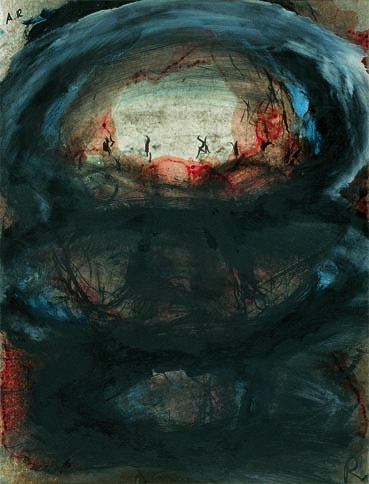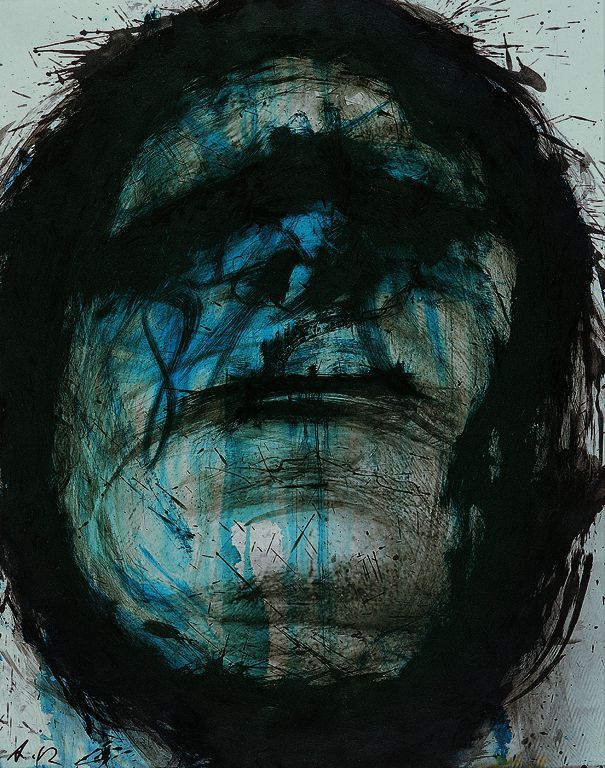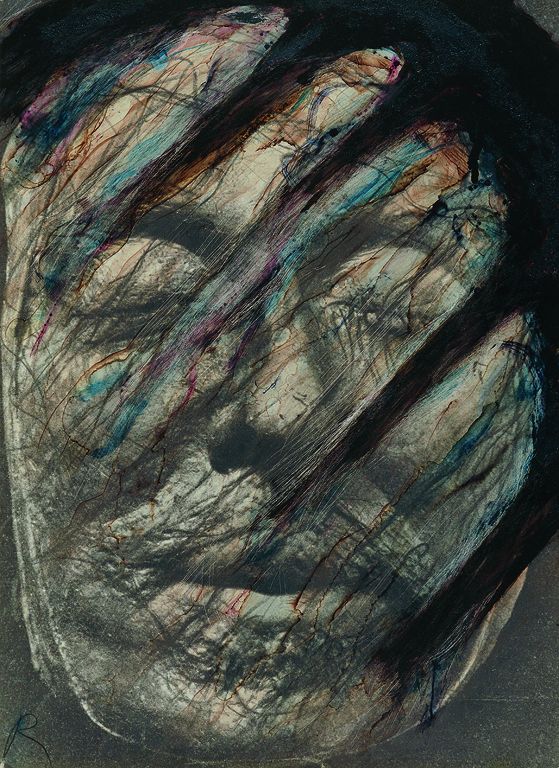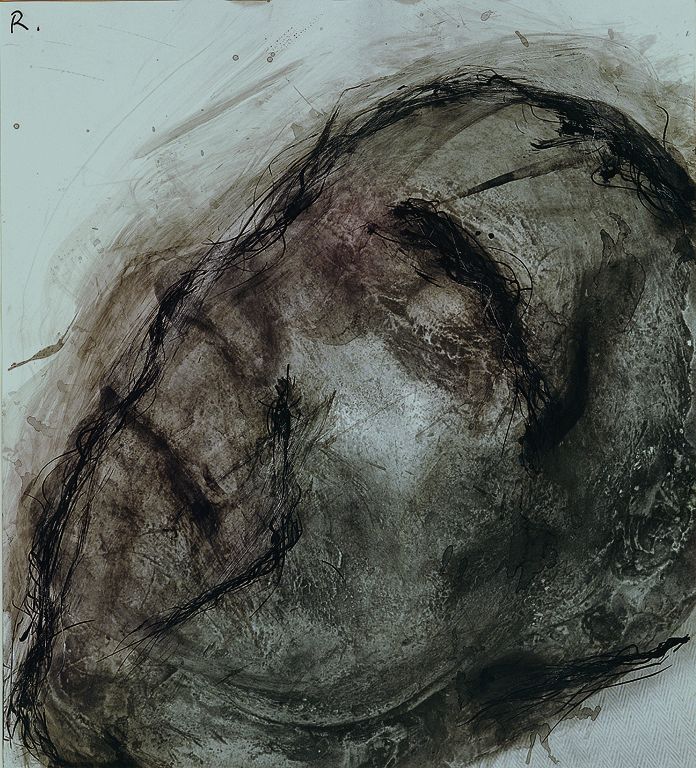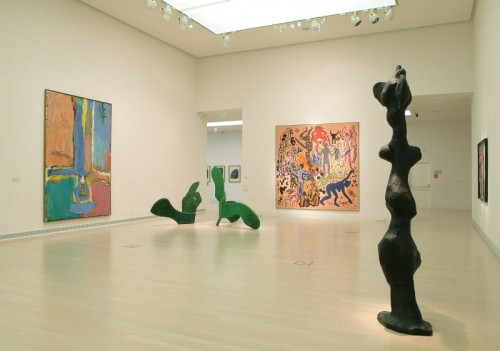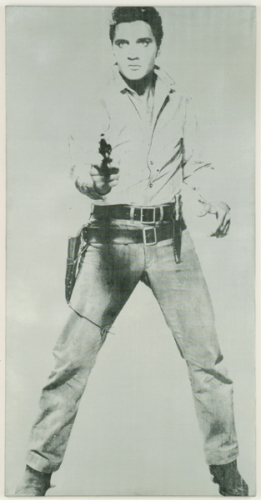Arnulf Rainer began drawing human faces in the 1960s. At first he made realistic portraits and then surreally grimacing, fictional ones. After discovering his own features in the grotesque facial expressions, he began to paint his own reflection from the end of the decade. He made self-portraits, then grimace series captured with the help of photo machines, which he then repainted, thus, in these compositions, the original features of the face could no longer be discerned. The pieces in the Death Masks series are based on the photographic illustrations of Ernst Benkard’s book Das Ewige Antlitz (Eternal Image), published in 1926, featuring famous historical figures (e.g., Josef Haydn, Pascal, Oliver Cromwell, or Isaac Newton). The death mask is still definitely a human artwork, which is “the last document of human expression, an artistic attitude that stems from life’s last, yet expressive effort, self-representation at the moment we enter the faceless sphere.” The death mask is the extension of the moment separating the ever-changing life and the decay of dead matter to eternity, the timelessness of unchanging that stops the passing of time. Rainer destroys the original work by repainting it, bringing movement and changing to the facial features stiffened by immobility. The death mask as a memento mori, that is, a painful reminder of the rapid passage of time spent on earth, is an attempt by religious and art tradition to make the incomprehensible, fearsome mystery presentable. The sinister, thick layer of paint brings back the feeling of horror to this aestheticizing genre, forcing the viewer to face the real face of death.
Zsuzska Petró
